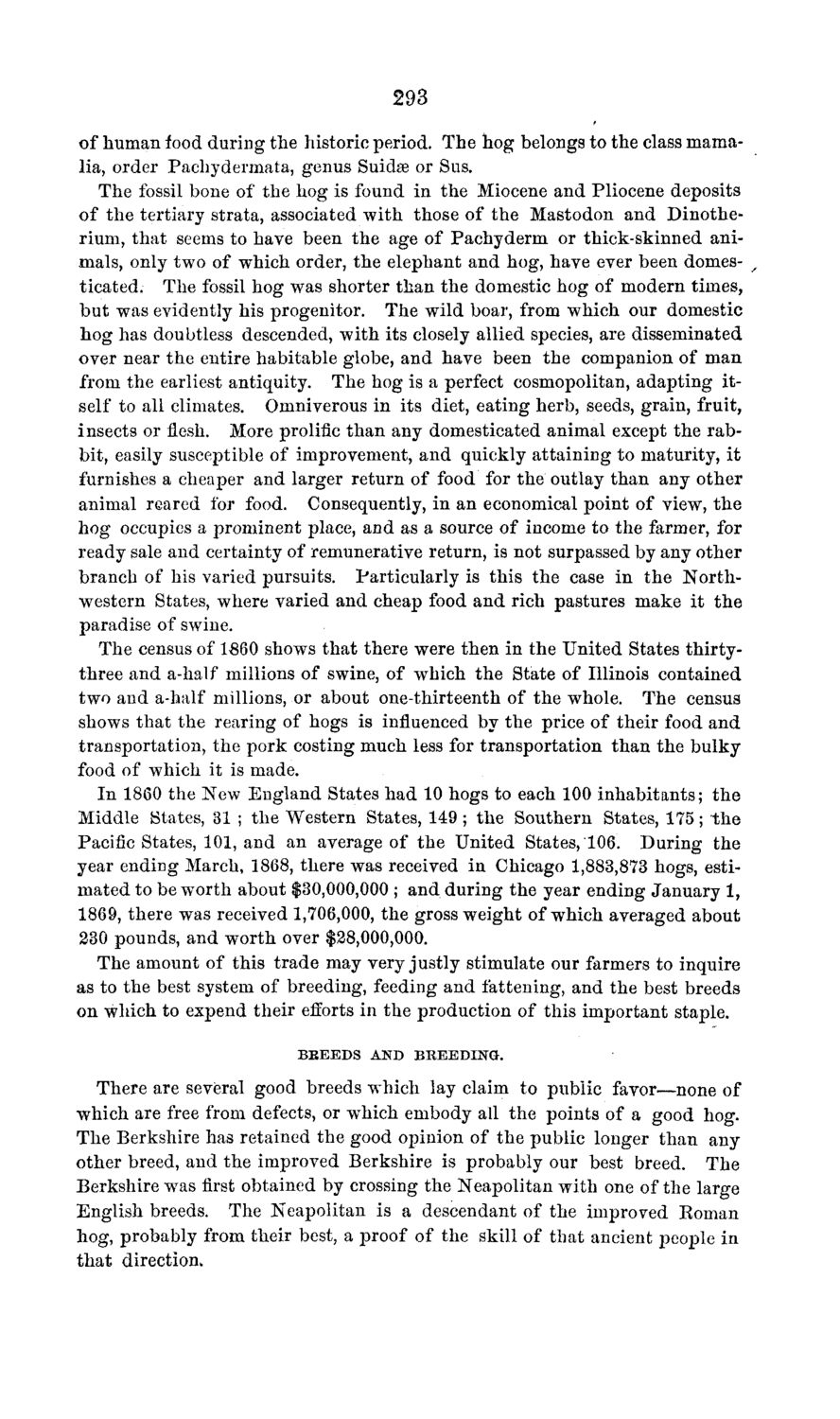| |
| |
Caption: Board of Trustees Minutes - 1869
This is a reduced-resolution page image for fast online browsing.

EXTRACTED TEXT FROM PAGE:
293 of human food during the historic period. The hog belongs to the class mamalia, order Pachydermata, genus Suidse or Sus. The fossil bone of the hog is found in the Miocene and Pliocene deposits of the tertiary strata, associated with those of the Mastodon and Dinotherium, that seems to have been the age of Pachyderm or thick-skinned animals, only two of which order, the elephant and hog, have ever been domes- f ticated. The fossil hog was shorter than the domestic hog of modern times, but was evidently his progenitor. The wild boar, from which our domestic hog has doubtless descended, with its closely allied species, are disseminated over near the entire habitable globe, and have been the companion of man from the earliest antiquity. The hog is a perfect cosmopolitan, adapting itself to all climates. Omniverous in its diet, eating herb, seeds, grain, fruit, insects or flesh. More prolific than any domesticated animal except the rabbit, easily susceptible of improvement, and quickly attaining to maturity, it furnishes a cheaper and larger return of food for the outlay than any other animal reared for food. Consequently, in an economical point of view, the hog occupies a prominent place, and as a source of income to the farmer, for ready sale and certainty of remunerative return, is not surpassed by any other branch of his varied pursuits. Particularly is this the case in the Northwestern States, where varied and cheap food and rich pastures make it the paradise of swine. The census of I860 shows that there were then in the United States thirtythree and a-half millions of swine, of which the State of Illinois contained two and a-half millions, or about one-thirteenth of the whole. The census shows that the rearing of hogs is influenced by the price of their food and transportation, the pork costing much less for transportation than the bulky food of which it is made. In 1860 the New England States had 10 hogs to each 100 inhabitants; the Middle States, 31 ; the Western States, 149; the Southern States, 175; the Pacific States, 101, and an average of the United States, 106. During the year ending March, 1868, there was received in Chicago 1,883,873 hogs, estimated to be worth about $30,000,000 ; and during the year ending January 1, 1869, there was received 1,706,000, the gross weight of which averaged about 230 pounds, and worth over $28,000,000. The amount of this trade may very justly stimulate our farmers to inquire as to the best system of breeding, feeding and fattening, and the best breeds on which to expend their efforts in the production of this important staple. BREEDS AND BREEDING. There are several good breeds which lay claim to public favor—none of which are free from defects, or which embody all the points of a good hog. The Berkshire has retained the good opinion of the public longer than any other breed, and the improved Berkshire is probably our best breed. The Berkshire was first obtained by crossing the Neapolitan with one of the large English breeds. The Neapolitan is a descendant of the improved Roman hog, probably from their best, a proof of the skill of that ancient people in that direction,
| |